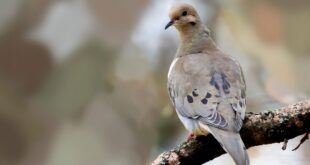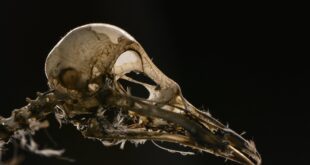There are various species of birds in the world. Some are very well-known, but some are not so common. In this detailed narrative, we will be exclusively talking about the one bird species which lays blue eggs, how they lay them, and why they have this unnatural color.
Female Emperor Penguins | The Only Bird To Lay Blue Eggs
How The Egg is Formed
A female Emperor Penguin is the only animal in the world that lays blue eggs. The egg-laying process starts with the ovary, and within this ovary is a structure called a follicle.
Only one oocyte is released from this follicle at any given time, which then goes on to become an egg cell (also known as an ootid). This gets the egg ready for fertilization.
The release of the oocyte is carried via Fallopian tubes (which are part of what make up the fallopian area), and when it comes out, it looks like a clear jellylike mass. This mass is developed with chalazae, a natural substance that attaches around its outer edges.
After the successful fertilization, what’s left of the follicle, after being released through the oocyte, now becomes what’s known as corpus luteum, an endocrine that develops during early pregnancy.
This affects the overall egg cell and gives it a blue color. The chalazae will break away from this area and will remain attached to the shell of the egg in later stages. Finally, after normal baby bird development stages in the egg, the chick finally breathes the first breath of his/her life.
How The Egg Gets Blue Color
Blue eggs have been around for quite some time thanks to our Emperor Penguin friends who live in Antarctica. One theory suggests that the actual color of these eggs is more along what’s called a very pale greenish-blue or gray (the exact color name isn’t known).
There are many different theories as to why they lay blue eggs including certain enzymes that are required to add or remove coloring from what would normally be a white color egg.
Another theory is known as a protoporphyrin IX ring. It’s what helps to determine what colors are produced by what an eye can normally see, and it could be what causes the blue coloring of these eggs.
There hasn’t been any research done on penguins who live in areas outside of Antarctica, so one thing that still needs to be researched is if other species of penguins lay blue or greenish-blue eggs, like what we see with the Emperor Penguin chicks.
These birds aren’t the only creatures that lay colored eggs. For instance, the butterfly, Paonia devein, lays yellow/orange/red ones while the Muscovy duck has what’s called a China-blue egg. The only way to know what these eggs will look like is when they are fertile.
To learn more about what’s what when it comes to bird eggs as well as what goes into the whole process of what makes up an egg cell, check out the book titled The Book of Eggs: A Life-Size Guide to The Eggs of Six Hundred of the World’s Bird Species by Mark E. Huber.
It goes into detail on what birds lay different colored eggs including what they look like and how their coloring is created (to help put things in perspective on why some birds’ eggs have special coloring).
For instance, reds can be produced through pigments called porphyrins while what’s called proteins can create what we call yellows and browns. Green is caused by what’s known as biliverdin which then changes to a blue hue once it is inside the egg cell.

The General Science of Egg Fertilization in Birds
It doesn’t matter what type of egg a bird lays, they all still have albumen (egg white) which will need to be eaten so that the baby chick can grow within its shell.
It must also need a yolk which is critical for the creation of an embryo, including things like yellow pigments (xanthophyll), calcium, phosphorus, and protein along with vitamins A & D as well as vitamins B1, B2, and B6.
You might also find it interesting to know about the process of egg-sexing. Although it hasn’t been practiced commercially, a lot of work and research has gone into it which tells us what a fertilized egg will produce (a male or female chick) thanks to the technology of DNA testing.
This type of method has yet to become widespread because the cost is still considered prohibitively expensive, but what scientists would do is extract the sperm from a sperm cell of an animal embryo.
They then place that sample into another cell whose nucleus was removed, which could then be seen under a microscope, where blue would mean a male embryo while no blues would mean a female egg.
How Egg Fertilization is Manipulated Artificially
Even though what scientists can do would be considered groundbreaking, what if there was a way for you to know what the bird species that lays blue eggs needs and make viable artificially so any type of egg would turn out to be what you desire?
This process is known as artificial insemination (AI) which is the artificial manipulation of sperm or semen is used to fertilize either an animal-produced egg (like through in vitro fertilization – IVF) or what goes into an actual hen’s body via syringes whose eggs are then stored instead of being laid by what we know as hen birds.
Although artificial insemination can help in producing the desired eggs to anyone’s liking, the basic technique to successfully carry on this procedure is known as pheasant genetics.
This type of genetic system was developed in Czechoslovakia which then went on to be called what we now consider artificial propagation.
The thing about this idea is that it isn’t well-accepted (even though it’s been around for decades) globally. The main concern is what if you need an egg from a bird species that lays blue eggs and it doesn’t exist naturally outside of what we know as zoos or wildlife preserves?
How can you ensure your desired results through artificial insemination? However, this practice does happen in scattered regions still, with mixed results, but in near future, a worldwide adoption may seem possible if the paradoxes about egg fertilization of the species and natural evolutionary concerns are finally solved.
 Access Birds Let’s Make The World A Happier, Healthier Place For Birds.
Access Birds Let’s Make The World A Happier, Healthier Place For Birds.




